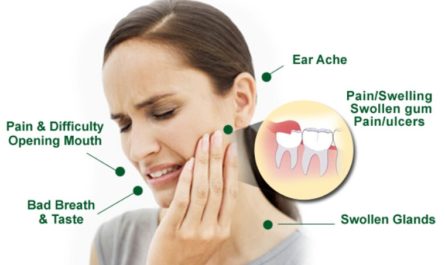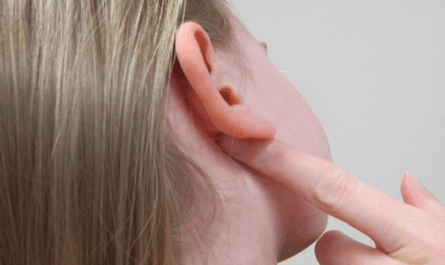Right upper quadrant pain is the pain located in the upper right part of the abdomen. This type of pain is typically caused by various conditions, including gallbladder disease, pancreatitis, hepatitis, and kidney stones.
Luckily, in most cases, this condition is nothing to worry about. Right upper quadrant pain may resolve on its own without needing treatment. For example, if the pain in your right upper quadrant results from gas, you may feel relief from your abdominal pain once you release the gas.
However, in other cases, your abdominal pain could signal something more severe and life-threatening, like cancer or a kidney infection. In this article, we’ll go through the causes of pain in the right upper quadrant and how to treat them.
Organs on the Right Upper Quadrant of the Body
The right upper quadrant (RUQ) of the human body is located below the right rib cage and above the navel. It contains several important organs, including the gallbladder, liver, right kidney, right ureter, and small intestine.
Right Liver: The liver is the largest organ in the body and is responsible for many functions, including producing bile which helps with digestion, detoxifying the body, and storing essential nutrients.
Right lung: The right lobe of the lung is located in the right upper quadrant and is responsible for oxygenating the blood.
Gallbladder: The gallbladder is a small organ located just below the liver and stores bile produced by the liver until it is needed for digestion.
Right kidney: The right kidney is responsible for filtering blood and regulating the amount of water and electrolytes present in the body.
Right ureter: The right ureter is a tube that carries urine from the right kidney to the bladder for storage. The small intestine is the main digestive organ in the body, breaking down food particles and absorbing nutrients.
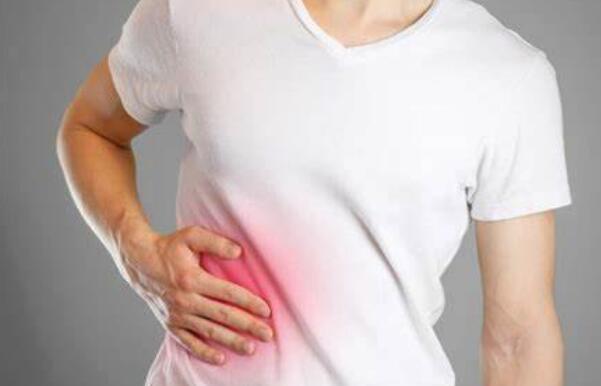
12 Common Causes of Right Upper Quadrant Pain
1. Kidney complications
Common kidney problems include kidney infection, cancer, kidney stones, and Urinary tract infections. These conditions can cause severe pain in the right upper quadrant.
One of the most common symptoms accompanying kidney problems is intense pain in your right upper quadrant (RUQ). The pain may last for a few minutes or several hours.
Other symptoms can include:
- Fever
- Painful urination
- Bad smelling urine
- Pain in the RUQ that may radiate to your groin and back
- Frequent urination
- Blood in your urine
- Nausea or vomiting
Treating Kidney problems
Treating your kidney problem will depend on the underlying cause. While some kidney problems can be treated, chronic kidney failure may require dialysis or a kidney transplant.
Pro tip: If your RUQ pain accompanies kidney dysfunction symptoms, make sure you visit your doctor instantly.
2. Gallstones and gallbladder problems
Gallstones are small digestive fluid deposits that harden and block your bile duct.
Gallbladder disease is one of the most common causes of right upper quadrant pain. Symptoms of gallbladder disease include pain that is steady and dull and is usually worse after eating a fatty meal. The pain may also be accompanied by nausea, vomiting, and fever.
In most cases, gallstones may be asymptomatic. But some causes, such as Biliary colic and cholecystitis, can cause intense pain in the right upper quadrant. The pain from gallbladder complications may radiate to your shoulder and back.
Other symptoms associated with gallbladder problems include:
- Nausea
- Vomiting
- Fever
- Chills
- Restlessness
- Sweating
- Jaundice (Yellowing of the eyes and skin)
- Dark stools
Treating gallstones
You should change your diet especially avoiding high-fatty foods and taking in high dietary fiber. However, the gallstones may take months or even years to disintegrate fully.
Gallstones blocking the bile ducts can lead to serious health problems. If the pain in your RUQ is severe, you may require surgery to remove the gallstones.
3. Liver complications
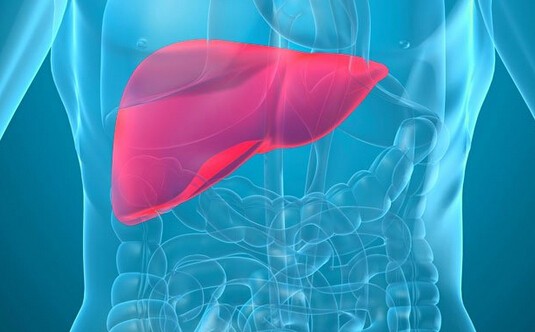
When you divide your abdomen into four quadrants, most of your liver stays in your right upper quadrant. So when your liver is dysfunctional, it could cause pain in your right upper quadrant.
Liver problems that could trigger pain in your upper abdomen include Hepatitis A, B, and C, liver abscesses, alcoholic liver disease, and liver cancer.
Hepatitis A
Hepatitis A can cause liver swelling and inflammation. It is a liver infection caused by the hepatitis A virus. This condition can also cause vomiting, fever, and diarrhea.
Hepatitis B
Hepatitis B is caused by the hepatitis B virus, which causes the liver to swell and inflame. This condition is contagious and can cause other acute diseases.
Acute hepatitis C
The hepatitis C virus causes acute hepatitis C. It can cause inflammation and damage to the liver. Acute hepatitis C can cause fatigue, nausea, loss of appetite, fever, and abdominal pain. It can cause pale white stools, dark urine, jaundice, and yellow skin in severe cases.
Pro tip: If your RUQ pain accompanies liver symptoms, get immediate medical attention.
Treating Liver problems:
Treating liver problems will depend on the type of condition affecting your liver. At the same time, some liver problems may improve with lifestyle changes like drinking less alcohol and making diet changes. Other liver conditions may require medications or even a transplant.
4. Preeclampsia
Preeclampsia is a pregnancy condition that emerges 20 weeks into a pregnancy. Sometimes, it can also develop earlier or six weeks after your delivery.
Preeclampsia drastically increases blood pressure and, in some cases, damages somebody’s organs like the liver or the kidneys.
Asides from a rise in blood pressure, preeclampsia can also cause severe pain in the RUQ.
Other symptoms of preeclampsia can include:
- Nausea or vomiting
- Shortness of breath
- Severe headache
- Protein in urine
- Weight gain
- Decreased urination
- Kidney or liver problems
- Blurred vision or sensitivity to light
Pro tip: If you are experiencing frequent abdominal pain during pregnancy, monitor your blood pressure regularly.
If preeclampsia is left untreated, it can be life-threatening for both the mother and the child.
If you notice a rise in your blood pressure, pain in your RUQ, shortness of breath, or any symptoms of preeclampsia, visit your doctor for immediate medical care.
5. Cancer
Some particular types of cancers can cause pain in your upper right quadrant, especially cancers of organs in your abdomen. Cancers that can cause pain in your RUQ include;
- Liver Cancer
- Pancreatic cancer
- Kidney cancer
- Stomach cancer
- gallbladder cancer
- Bile duct cancer
- Lymphoma
Depending on the type of cancer, the pain may affect just a section of your stomach or spread throughout your abdomen. Along with severe pain in your upper abdomen, other symptoms that accompany cancer include:
- Unexplained weight loss
- Fever
- Loss of appetite
- Fatigue
- Jaundice (Yellowing of the skin)
- Constipation
- Diarrhea
- Nausea and vomiting
- Blood in your urine or stool
- Indigestion
Treatment for cancer
If a specific cancer is responsible for your cancer, treating particular cancer will reduce the pain in your RUQ. There are a few options that could treat your cancer. Some treatment options available include:
- Surgery
- Chemotherapy
- Hormone therapy
- Radiation therapy
- Immunotherapy
- Stem cell transplant
6. Pancreatitis
Your pancreas sits behind your stomach and beside the small intestine. It’s responsible for producing insulin, hormones, and some vital enzymes.
When your pancreas becomes inflamed, it could cause pain in your right upper quadrant. Excessive alcohol abuse, viral infections, certain medications, and sudden immune system attacks can cause the pancreas to swell and inflame.
Gallstones could also block the pancreatic duct and cause acute pancreatitis. Pain in your right upper quadrant is a significant symptom of acute pancreatitis. Other symptoms include:
- Nausea
- Vomiting
- Fever
- Jaundice
- Diarrhea
You must immediately visit your doctor if you experience any of these symptoms and pain in your right upper abdomen.
The pain accompanying acute pancreatitis usually occurs immediately after drinking or eating food or when you lie on your back. The abdominal pain may be severe and last for several days.
In some cases, chronic pancreatitis can cause persistent pain and damage the pancreas permanently.
Treating pancreatitis
Acute pancreatitis is usually treated by administering intravenous fluids and certain pain medications to soothe the pain.
Your doctor will diagnose your symptoms to determine the underlying cause of your pancreatitis and the type of treatment you’ll require.
For example, you may require surgery if your pancreatitis is caused by stones or pebbles obstructing your bile duct.
Pro tip: If excessive alcohol abuse is the primary cause of your pancreatitis, make conscious efforts to reduce your alcohol intake and change your diet.
7. Pneumonia
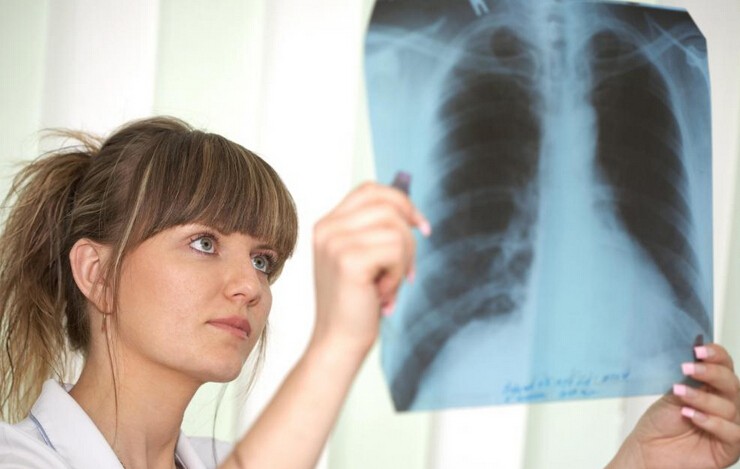
Pneumonia is an infection that affects one or both of the lungs. The disease could be bacterial, viral, or fungal.
Pneumonia causes inflammation in the air sacs and fills the sacs with fluid and pus. When your air sacs have fluid, it could cause difficulty breathing, chest pain, coughing with phlegm, and abdominal pain in the upper right quadrant.
This condition could be fatal, especially in infants, people with weak immune systems, and people above 65. Other symptoms of pneumonia can include:
- Difficulty breathing
- Fatigue
- Fever
- Nausea
- Vomiting
- Diarrhea
8. Appendicitis
Your appendix is located in your lower right abdomen. When your appendix becomes inflamed due to an infection, you have appendicitis.
The hallmark symptom of appendicitis is a pain in the abdomen. The pain may start as mild cramps, but as the inflammation worsens, it increases until it becomes unbearable.
Your appendicitis may be acute or chronic and can develop in children and adults.
Other symptoms of appendix include:
- Abdominal bloating
- Indigestion
- Pain on the right side of the lower abdomen
- Intense pain that worsens if you cough or walk
- Constipation or diarrhea
- Nausea and vomiting
- Loss of appetite
- Low-grade fever that may worsen as the illness progresses
- Flatulence
Treating appendicitis
Appendicitis can be life-threatening, especially if your appendix ruptures.
Treatment options available for appendicitis include;
- Antibiotics
- Pain relievers
- IV fluids
- Needle drainage or surgery to drain an abscess
- Surgery to remove your appendix (Appendectomy)
- Liquid diet
9. Gastritis
Gastritis is the inflammation of the protective lining in the stomach, and a bacterial infection usually causes it.
The most common symptom of gastritis is pain in the upper abdomen. The pain may be mild or severe and can worsen when you eat. Drinking excess alcohol and using the strong medication can also trigger gastritis. Gastritis could also cause nausea and vomiting.
10. Peptic ulcer
You have a peptic ulcer when there’s an open sore on either side of your stomach’s lining. A peptic ulcer is usually caused by bacteria (H. pylori) or excessive use of strong painkillers like aspirin.
The primary symptom of a peptic ulcer is a burning sensation on the left side of your upper abdomen.
Other symptoms of a peptic ulcer can include the following:
- Heartburn
- Feeling of fullness
- Nausea
- Intolerance of fatty foods
Treating peptic ulcer
Your doctor may recommend medications that kill the bacteria causing the ulcer. Certain medications heal open sores and protect the stomach’s lining from injury.
11. Indigestion
Indigestion does not refer to a certain disease but a series of symptoms of stomach upset. Common reasons include eating greasy or spicy food, eating too much or too fast, and drinking alcohol or carbonated drinks. Other reasons, such as smoking, anxiety, excessive stress, and taking certain drugs, can also cause indigestion.
Indigestion can cause abdominal pain shortly after eating. Other symptoms include vomiting, nausea, and abdominal distension. This pain can radiate to the chin, neck, or arms in some severe cases.
Indigestion treatment
For “mild” indigestion, the symptoms can be reduced by changing the diet. Choose a lighter and simpler diet, and eat small and frequent meals. For severe symptoms, you need to seek emergency medical treatment.
12. Pregnancy
Pregnancy is also a common cause of right abdominal pain. As the baby grows in the womb, it will squeeze the mother’s body organs and cause pain. In addition, due to hormonal changes in the body, pregnant women may experience digestive problems. This can also cause vomiting, indigestion, and right upper quadrant pain.
Under normal circumstances, these symptoms will disappear automatically after delivery. So you don’t need to worry too much, but if you experience severe pain and other symptoms, you need to seek medical attention immediately.
Treatment for right upper quadrant pain
Right upper quadrant (RUQ) pain is a symptom of various medical conditions, ranging from minor to severe. It is important to identify the cause of the pain, as proper treatment will depend on the underlying cause.
Minor causes of RUQ pain can include muscle strain, indigestion, or gas. Treatment for these conditions is relatively straightforward and may include taking over-the-counter medication such as ibuprofen, acetaminophen, or antacids. It may also involve lifestyle changes such as avoiding certain trigger foods or eating smaller meals more frequently.
More serious causes of RUQ pain can include gallstones, hepatitis, or pancreatitis. Gallstones can be treated with medication or, if necessary, surgery. Hepatitis can be treated with antiviral medication and lifestyle modifications, such as avoiding alcohol and eating a healthy diet.
Pancreatitis may require hospitalization and intravenous fluid therapy. RUQ pain can also be caused by cancer, such as liver cancer, pancreatic cancer, or gallbladder cancer. Cancer treatment will depend on the type and stage of cancer. Surgical removal of the tumor may be necessary, as well as radiation therapy or chemotherapy.
When to See a Doctor?
The symptoms you should look out for that may signal a serious condition include:
- Severe abdominal pains
- The pain persists or worsens over time
- Pain is accompanied by other symptoms such as fever, nausea, vomiting, or changes in bowel habits.
- Unexplained weight loss
- Blood in your stool
- Swelling or tenderness of your abdomen
- Jaundice (Yellowing of the skin and eyes)
If pain is felt in the right upper quadrant, it is important to seek medical advice if it is severe, persistent, or accompanied by other symptoms. A doctor can perform a physical examination, order laboratory tests, and recommend imaging tests such as an ultrasound or MRI to determine the cause.




